Flexible Five-in-One Microsensor for Real-Time Wireless Microscopic Diagnosis inside Electric Motorcycle Fuel Cell Stack Range Extender
Abstract
1. Introduction
2. Design and Production of PEMFC Stack
3. Integrated Design and Sensing Principle of Microsensor
3.1. Integrated Design of Flexible Five-in-One Microsensor
3.2. Sensing Principle of Micro Flow Sensor
4. Process Development of Flexible Five-in-One Microsensor
5. Durability and Reliability Tests for Flexible Five-in-One Microsensor
5.1. Temperature Correction of Flexible Five-in-One Microsensor
5.2. Humidity Correction of Flexible Five-in-One Microsensor
6. Internal Measurement and Wireless Microscopic Diagnosis of Fuel Cell Stack
6.1. Comparison between Normal Flow Rate and Low Flow Rate and Operating Conditions of Wireless Sensor
6.1.1. Fuel Cell Stack Performance Testing
6.1.2. Local Temperature Distribution Difference between Normal Flow Rate and Low Flow Rate
6.1.3. Local Relative Humidity Distribution Difference between Normal Flow Rate and Low Flow Rate
6.1.4. Local Flow Distribution Difference between Normal Flow Rate and Low Flow Rate
6.1.5. Local Current Density Distribution Difference between Normal Flow Rate and Low Flow Rate
7. Conclusions
Author Contributions
Funding
Acknowledgments
Conflicts of Interest
References
- Wang, W.L.; He, S.M.; Lan, C.H. Protective graphite coating on metallic bipolar plates for PEMFC applications. Electrochim. Acta 2012, 62, 30–35. [Google Scholar] [CrossRef]
- Fuel Cell Technologies Program: Multi-Year Research, Development and Demonstration Plan; MYRD&D Plan: Pittsburgh, PA, USA, 2005.
- Wilberforce, T.; Hassan, Z.E.; Ogungbemi, E.; Ijaodola, O.; Khatib, F.N.; Durrant, A.; Thompson, J.; Baroutaji, A.; Olabi, A.G. A comprehensive study of the effect of bipolar plate (BP) geometry design on the performance of proton exchange membrane (PEM) fuel cells. Renew. Sustain. Energy Rev. 2019, 111, 236–260. [Google Scholar] [CrossRef]
- Madadi, F.; Rezaeian, A.; Edris, H.; Zhiani, M. Improving performance in PEMFC by applying different coatings to metallic bipolar plates. Mater. Chem. Phys. 2019, 238, 121911–121920. [Google Scholar] [CrossRef]
- Lee, C.Y.; Hsieh, W.J.; Wu, G.W. Embedded flexible micro-sensors in MEA for measuring temperature and humidity in a micro-fuel cell. J. Power Sources 2008, 181, 237–243. [Google Scholar] [CrossRef]
- Hoeflinger, J.; Hofmann, P. Air mass flow and pressure optimisation of a PEM fuel cell range extender system. Int. J. Hydrogen Energy 2020, in press. [Google Scholar] [CrossRef]
- Tang, Y.Q.; Fang, W.Z.; Lin, H.; Tao, W.Q. Thin film thermocouple fabrication and its application for real-time temperature measurement inside PEMFC. Int. J. Heat Mass Transf. 2019, 141, 1152–1158. [Google Scholar] [CrossRef]
- Lee, C.Y.; Hsieh, C.L.; Chen, C.H.; Huang, Y.P.; Jiang, C.A.; Wu, P.C. A flexible 5-in-1 microsensor for internal microscopic diagnosis of vanadium redox flow battery charging process. Sensors 2019, 19, 1030. [Google Scholar] [CrossRef]
- Fergany, A.A.E. Extracting optimal parameters of PEM fuel cells using Salp Swarm Optimizer. Renew. Energy 2018, 119, 641–648. [Google Scholar] [CrossRef]
- Inman, K.; Wang, X.; Sangeorzan, B. Detection of liquid water in the flow channels of PEM fuel cell using an optical sensor. Int. J. Hydrogen Energy 2014, 39, 19691–19700. [Google Scholar] [CrossRef]
- St-Pierre, J.; Wilkinson, D.P.; Knights, S.; Bos, M. Relationships between water management, contamination and lifetime degradation in PEFC. J. New Mater. Electrochem. Syst. 2000, 3, 99–106. [Google Scholar]
- Mughal, A.; Li, X. Experimental diagnostics of PEM fuel cells. Int. J. Environ. Stud. 2006, 63, 377–389. [Google Scholar] [CrossRef]
- Yang, X.G.; Burke, N.; Wang, C.Y.; Tajiri, K.; Shinohara, K. Simultaneous measurements of species and current distributions in a PEFC under low-humidity operation. J. Electrochem. Soc. 2005, 152, A759–A766. [Google Scholar] [CrossRef]
- Tan, Q.; Lv, W.; Ji, Y.; Song, R.; Lu, F.; Dong, H.; Zhang, W.; Xiong, J. A LC wireless passive temperature-pressure-humidity (TPH) sensor integrated on LTCC ceramic for harsh monitoring. Sens. Actuators B 2018, 271, 433–442. [Google Scholar] [CrossRef]
- Huang, Y.; Wang, L.; Hou, Y.; Zhang, W.; Zhang, Y. A prototype IOT based wireless sensor network for traffic information monitoring. Int. J. Pavement Res. Technol. 2018, 11, 146–152. [Google Scholar] [CrossRef]
- Jafer, E.; Ibala, C.S. Design and development of multi-node based wireless system for efficient measuring of resistive and capacitive sensors. Sens. Actuators A 2013, 189, 276–287. [Google Scholar] [CrossRef]
- Huang, Y.; Dong, W.; Huang, T.; Wang, Y.; Xiao, L.; Su, Y.; Yin, Z. Self-similar design for stretchable wireless LC strain sensors. Sens. Actuators A 2015, 224, 36–42. [Google Scholar] [CrossRef]
- Kuan, Y.D.; Ciou, C.W.; Shen, M.Y.; Wang, C.K.; Fitriani, R.Z.; Lee, C.Y. Bipolar plate design and fabrication using graphite reinforced composite laminate for proton exchange membrane fuel cells. Int. J. Hydrogen Energy 2020, in press. [Google Scholar] [CrossRef]
- Iqbal, M.Z.; Siddique, S.; Khan, A.; Haider, S.S.; Khalid, M. Recent developments in graphene based novel structures for efficient and durable fuel cells. Mater. Res. Bull. 2020, 122, 110674–110684. [Google Scholar] [CrossRef]
- Song, Y.; Zhang, C.; Ling, C.Y.; Han, M.; Yong, R.Y.; Sun, D.; Chen, J. Review on current research of materials, fabrication and application for bipolar plate in proton exchange membrane fuel cell. Int. J. Hydrogen Energy 2020, in press. [Google Scholar] [CrossRef]
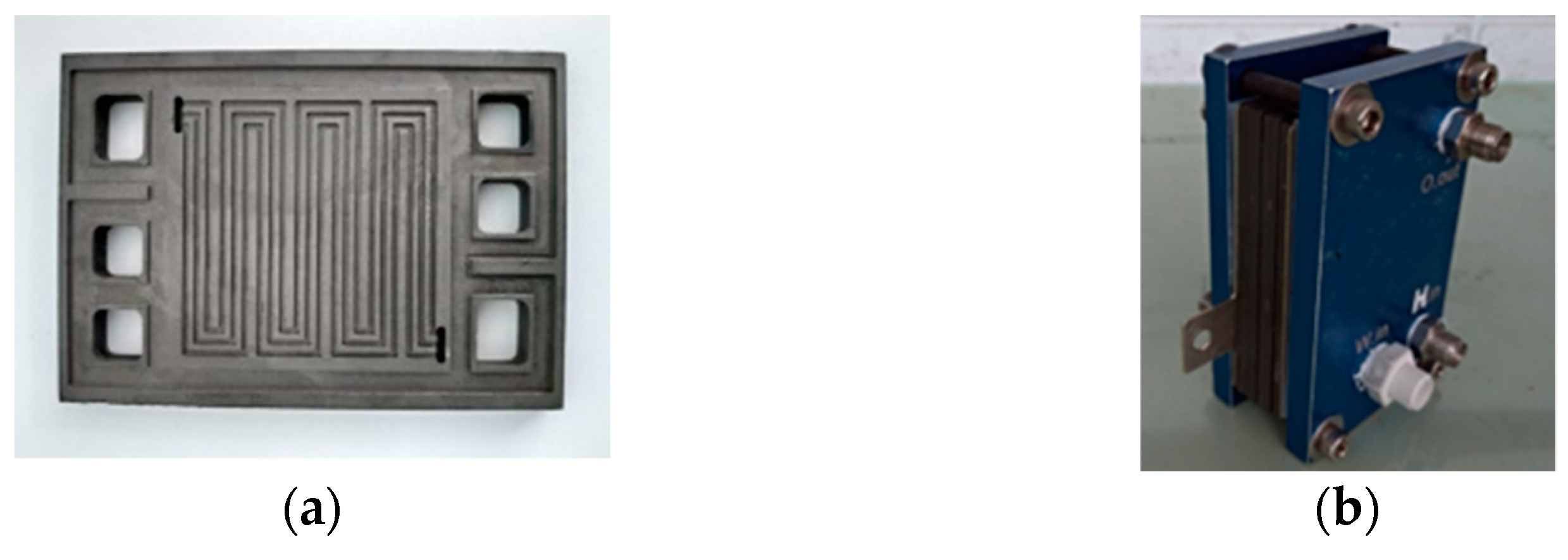


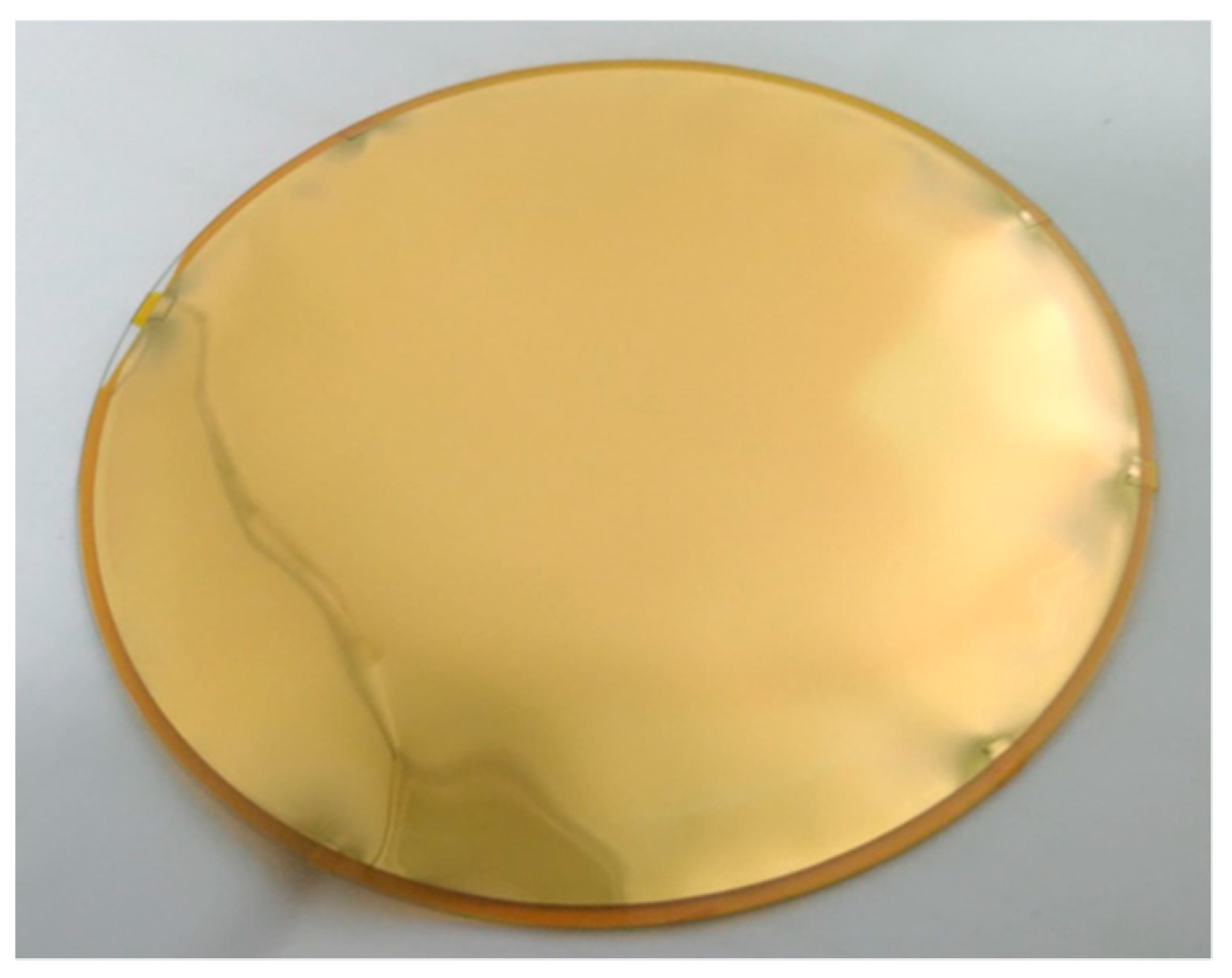
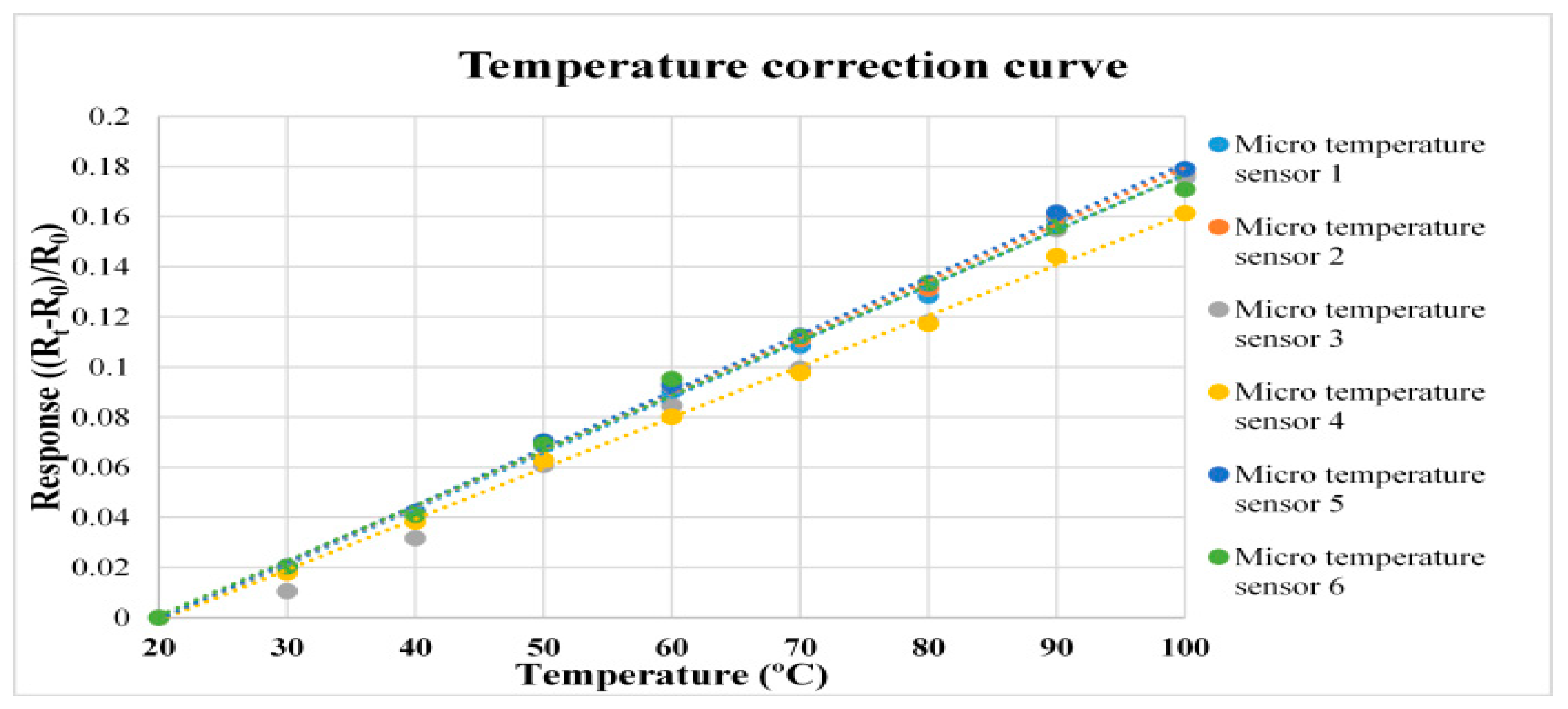
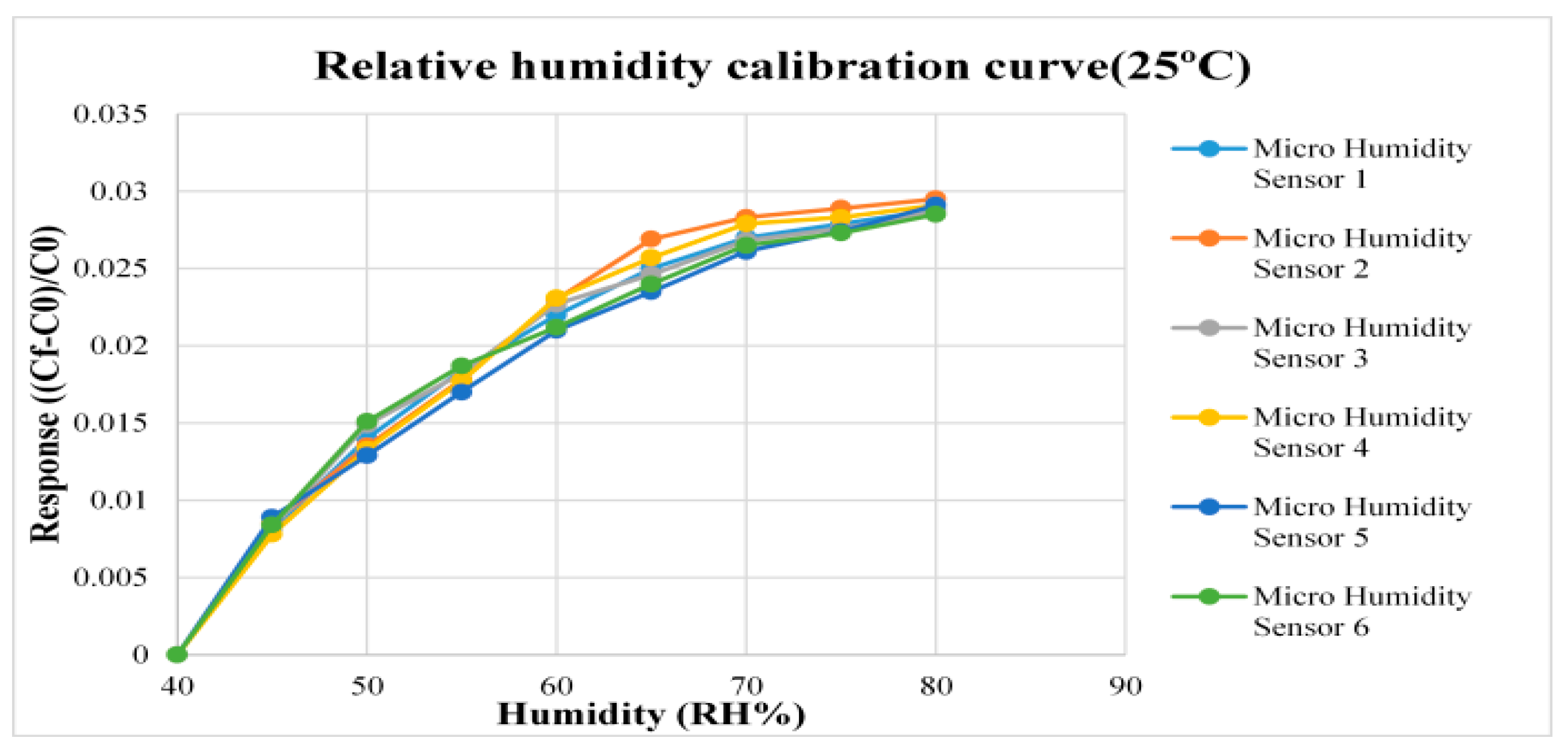
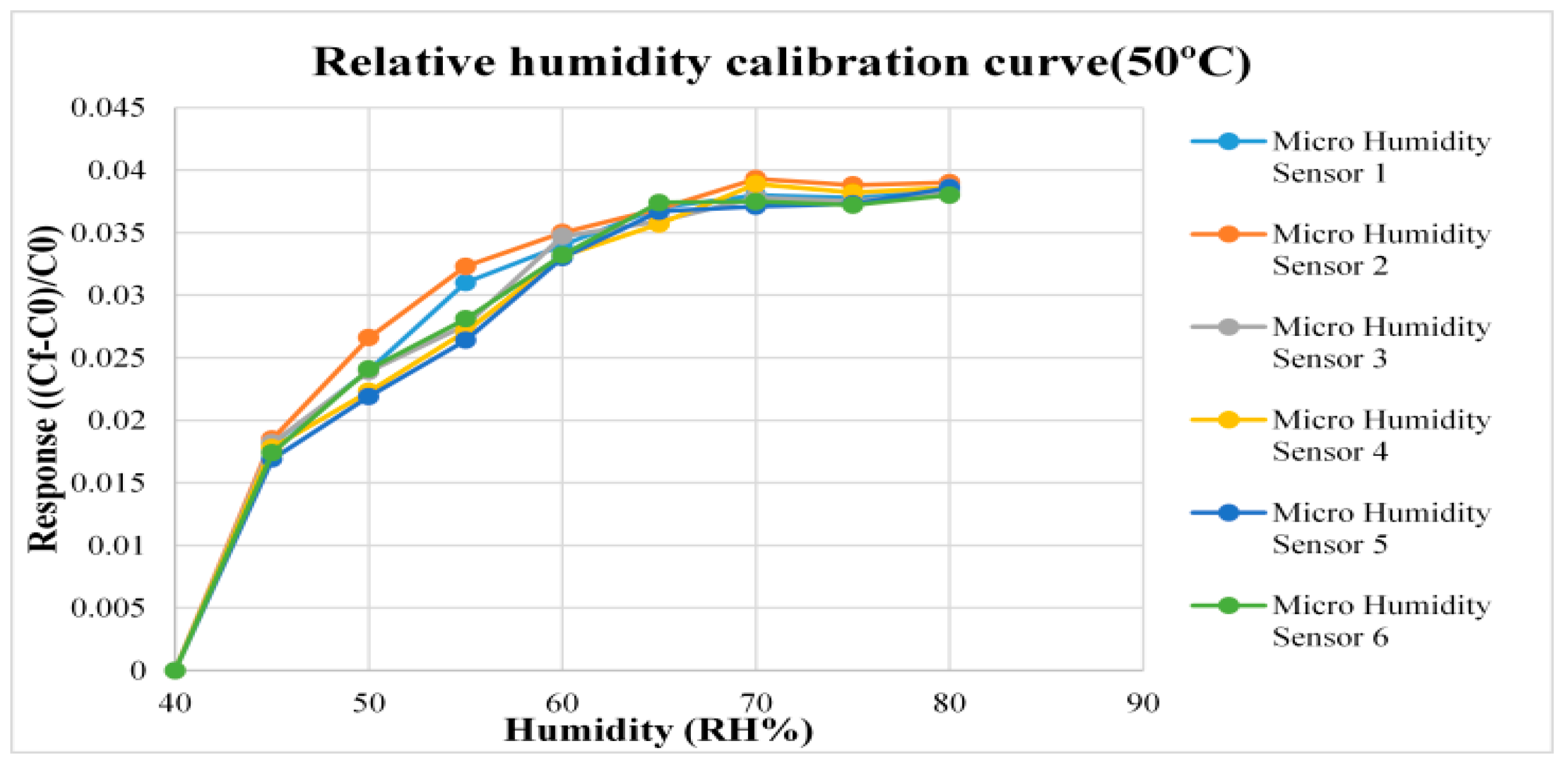
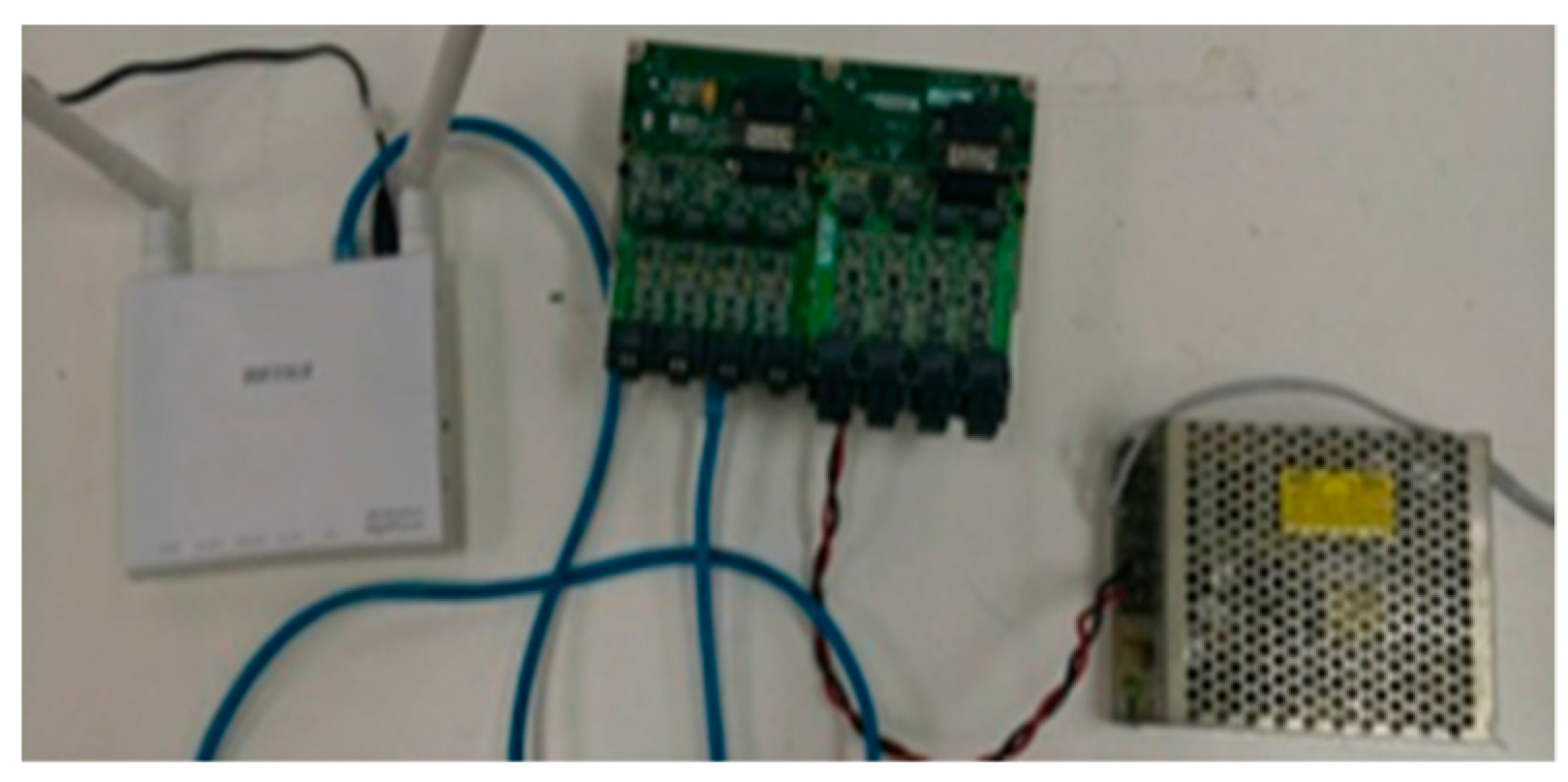

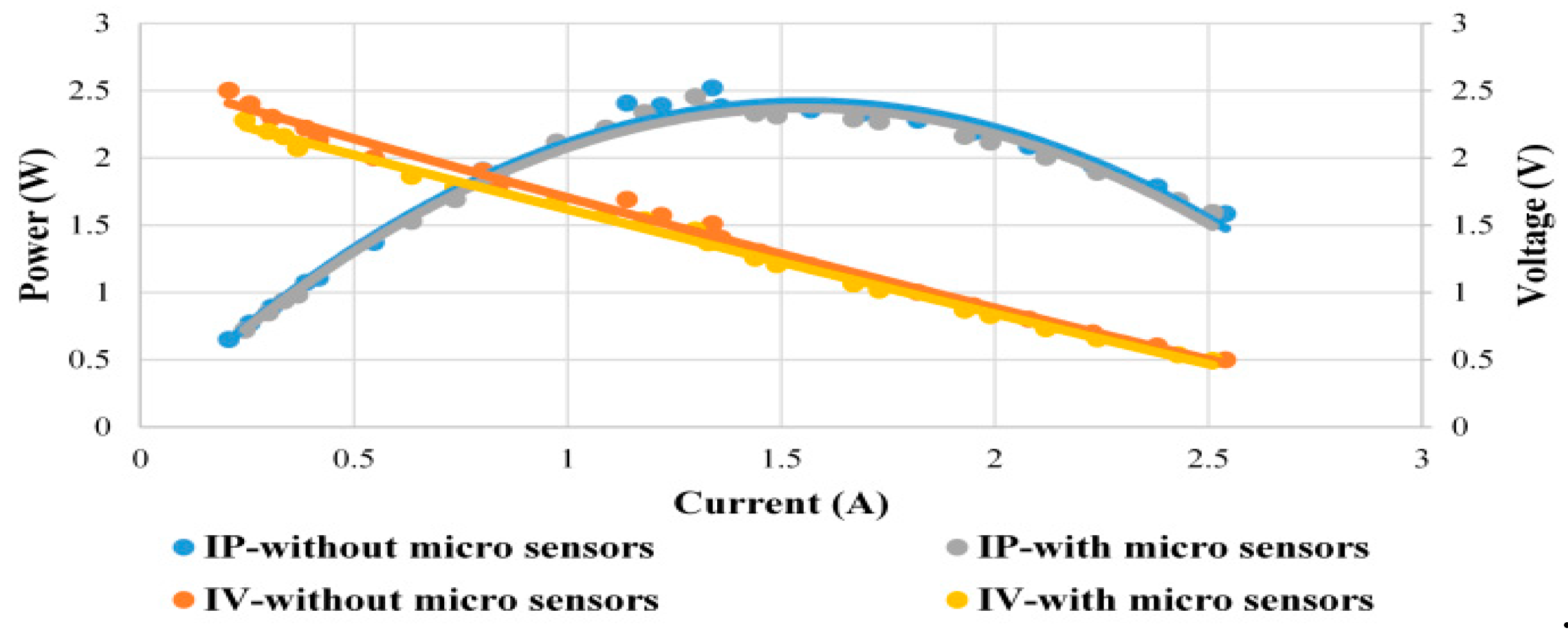
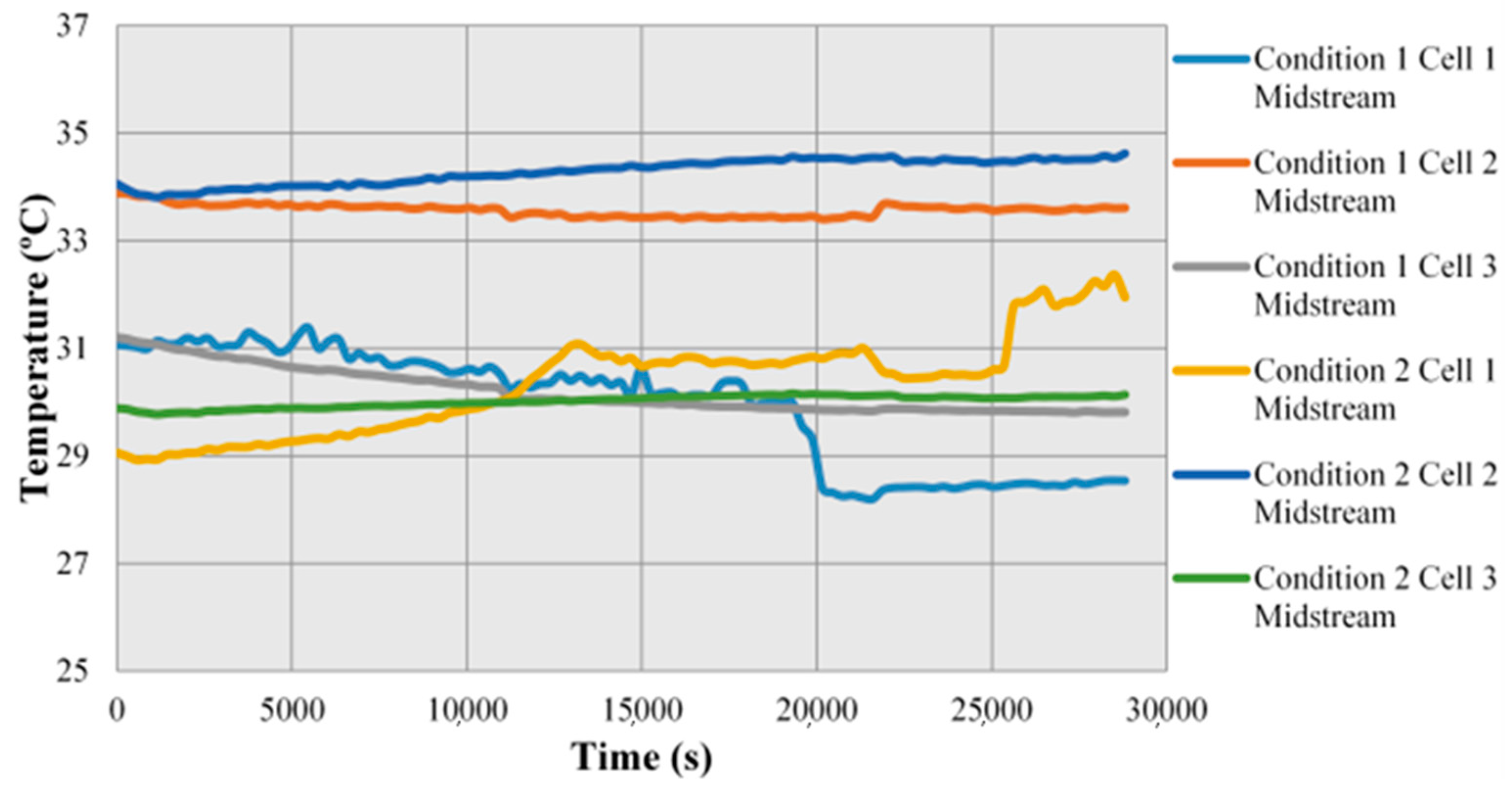
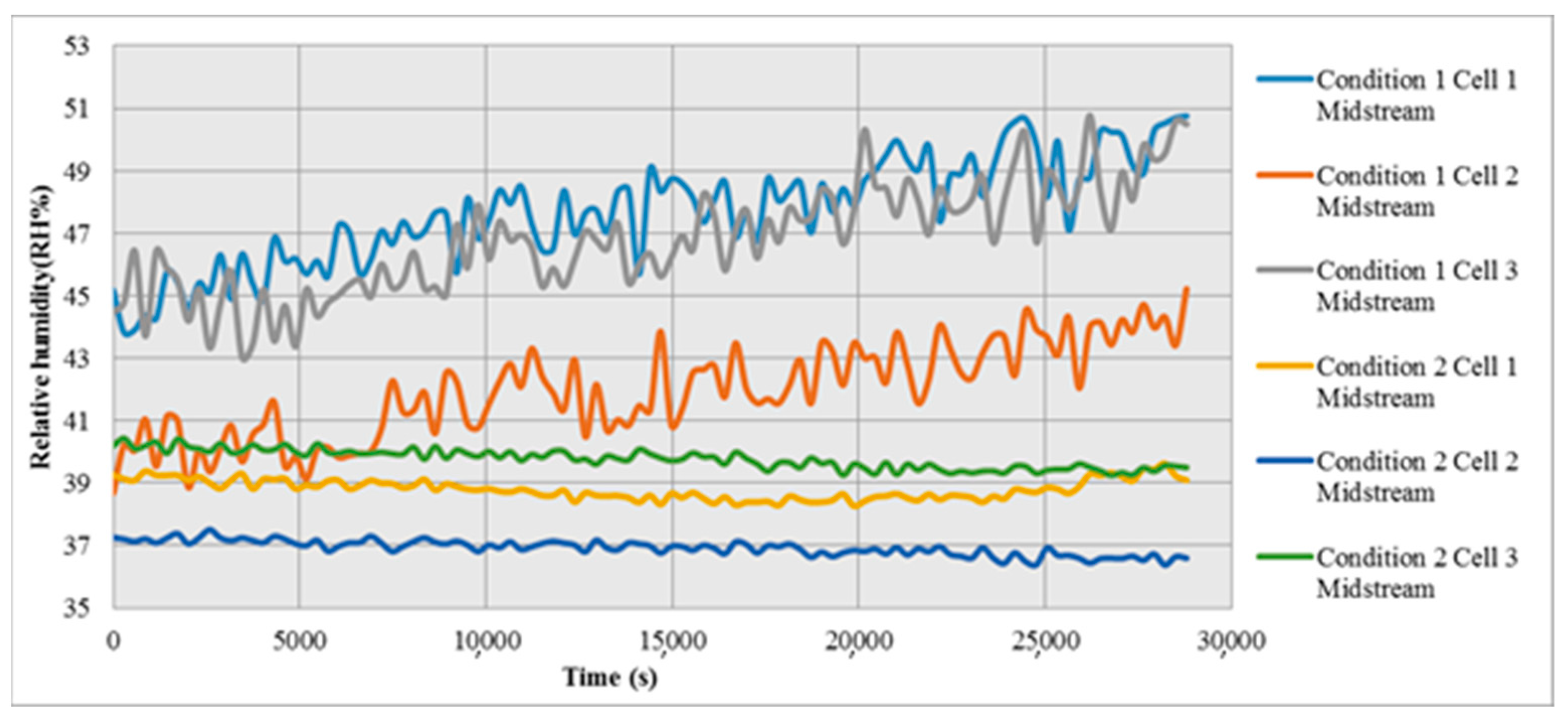
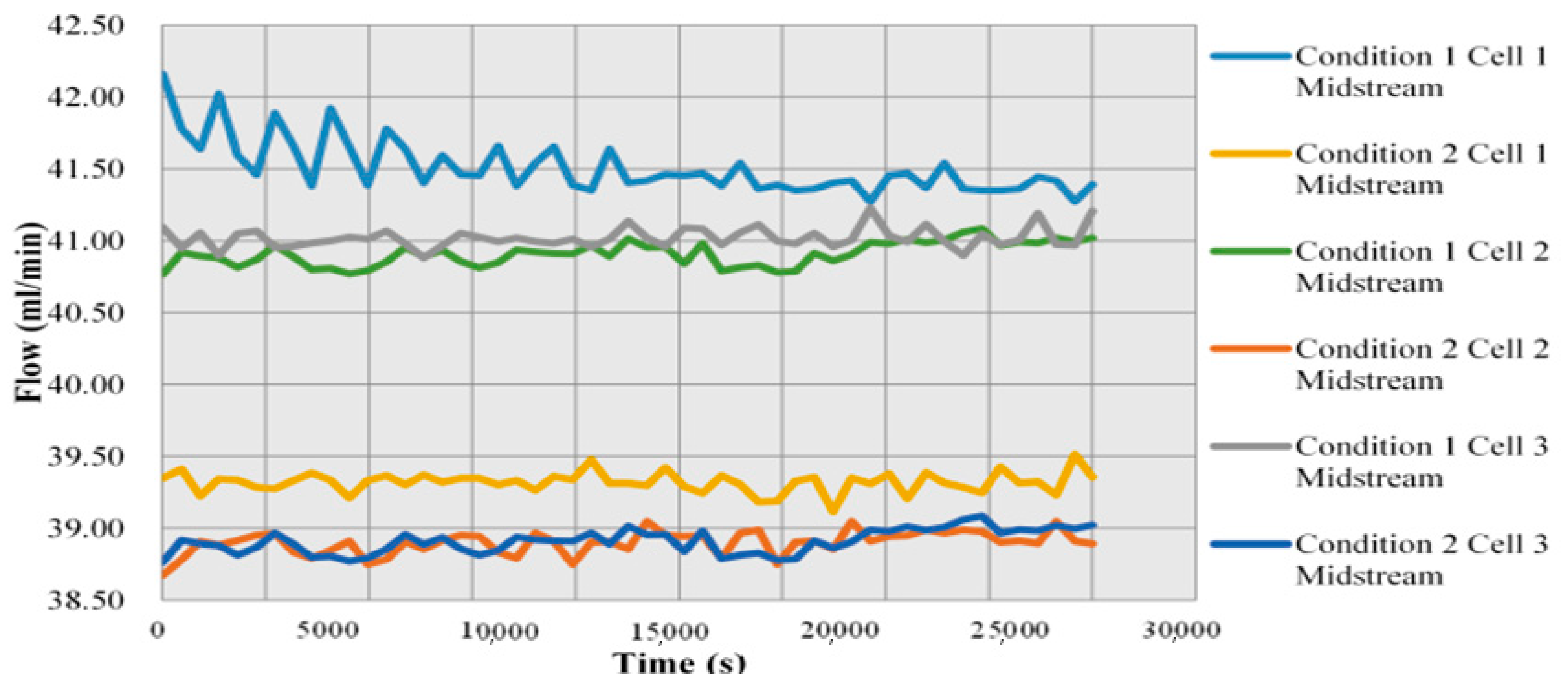
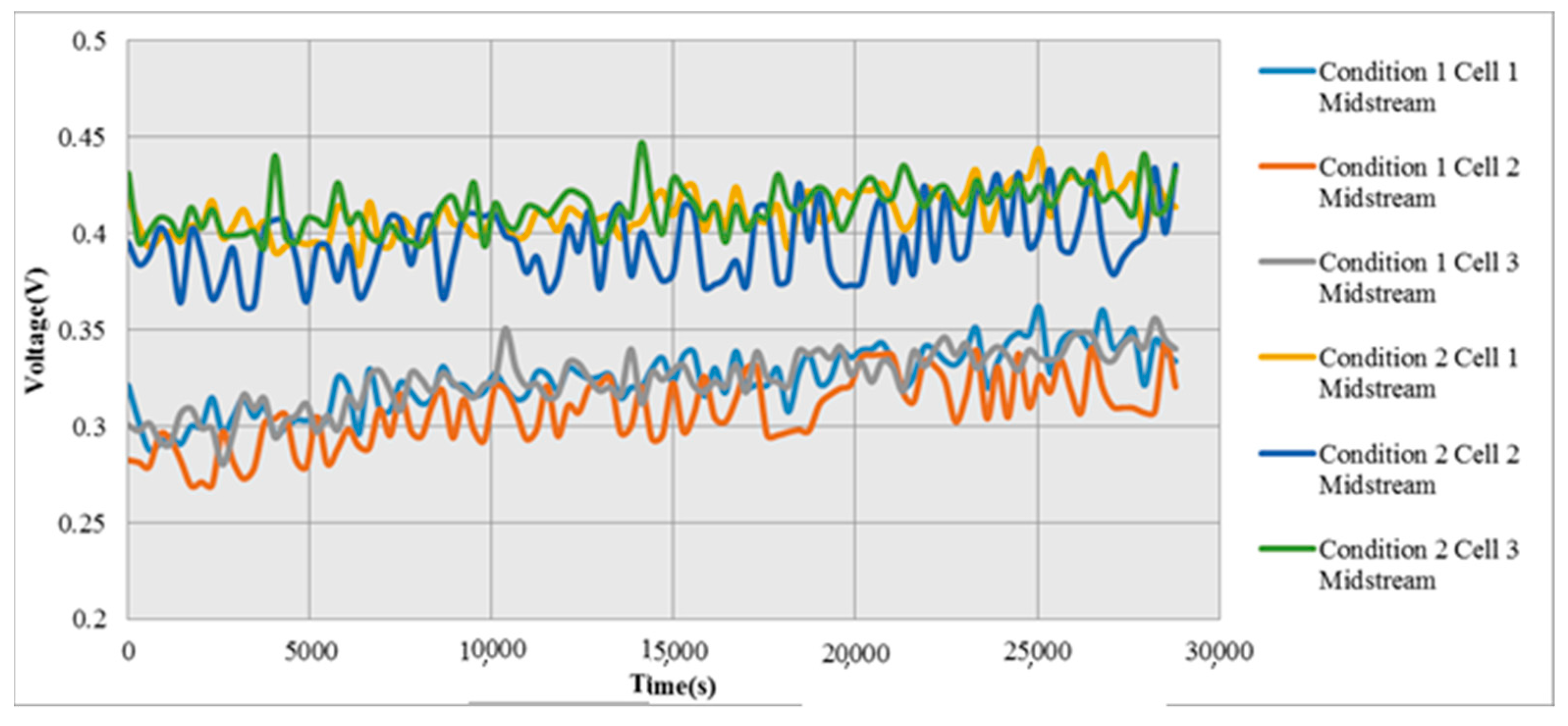

| Item | Condition |
|---|---|
| Bipolar plate thickness (mm) | 6 |
| Runner type | Anode, Cathode: Multiple (3 runners) |
| Runner depth (mm) | 1 |
| Runner width (mm) | 1 |
| Rib width (mm) | 1 |
| Item | Flow | Output Current | Temperature | Time |
|---|---|---|---|---|
| Condition 1 | Hydrogen: 0.5 slpm Oxygen: 1.5 slpm | 1 A | 25 °C | 8 h |
| Condition 2 | Hydrogen: 0.05 slpm Oxygen: 1.5 slpm |
Publisher’s Note: MDPI stays neutral with regard to jurisdictional claims in published maps and institutional affiliations. |
© 2021 by the authors. Licensee MDPI, Basel, Switzerland. This article is an open access article distributed under the terms and conditions of the Creative Commons Attribution (CC BY) license (http://creativecommons.org/licenses/by/4.0/).
Share and Cite
Lee, C.-Y.; Chen, C.-H.; Lee, T.-J.; Cheong, J.-S.; Liu, Y.-C.; Chen, Y.-C. Flexible Five-in-One Microsensor for Real-Time Wireless Microscopic Diagnosis inside Electric Motorcycle Fuel Cell Stack Range Extender. Micromachines 2021, 12, 103. https://doi.org/10.3390/mi12020103
Lee C-Y, Chen C-H, Lee T-J, Cheong J-S, Liu Y-C, Chen Y-C. Flexible Five-in-One Microsensor for Real-Time Wireless Microscopic Diagnosis inside Electric Motorcycle Fuel Cell Stack Range Extender. Micromachines. 2021; 12(2):103. https://doi.org/10.3390/mi12020103
Chicago/Turabian StyleLee, Chi-Yuan, Chia-Hung Chen, Ti-Ju Lee, John-Shong Cheong, Yi-Cheng Liu, and Yu-Chun Chen. 2021. "Flexible Five-in-One Microsensor for Real-Time Wireless Microscopic Diagnosis inside Electric Motorcycle Fuel Cell Stack Range Extender" Micromachines 12, no. 2: 103. https://doi.org/10.3390/mi12020103
APA StyleLee, C.-Y., Chen, C.-H., Lee, T.-J., Cheong, J.-S., Liu, Y.-C., & Chen, Y.-C. (2021). Flexible Five-in-One Microsensor for Real-Time Wireless Microscopic Diagnosis inside Electric Motorcycle Fuel Cell Stack Range Extender. Micromachines, 12(2), 103. https://doi.org/10.3390/mi12020103





